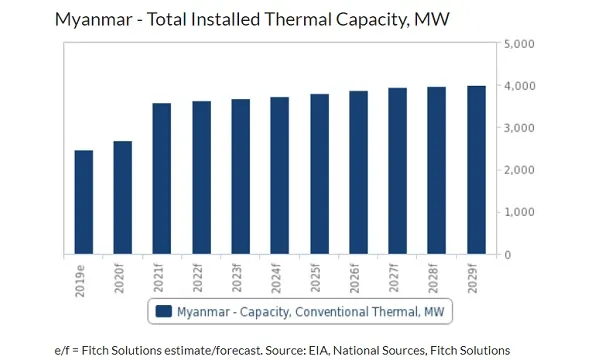
Gas-fired power on the rise in Myanmar
Two gas power projects are tipped to come online in 2020.
Myanmar's gas power sector could see growth in the longer term, as the government looks to the fuel source to meet with surging power demand, according to Fitch Solutions.
There has been recent progress noted from several gas-fired projects under emergency tenders in the country. In June 2019, the government announced tenders for five gas projects totalling 1.04GW, and expected these projects to enter operation in early 2020.
These projects were expected to be subjected to very high risks, given the tight deadlines and contract terms set by the government, Fitch noted. However, though these projects faced delays, they may still come online within the next two years, with one of the five plants having undergone test runs on April 15 and 20.
“We now expect two out of the five—the 21MW Kyun Chaung plant and the 150MW Ahlone plant [which went through the test runs]—to still come online over the coming months, given project progress and have included them into our forecasts,” the report stated.
Further, the National Electrification Plan (NEP) aims to achieve nationwide electrification by 2030. At present, less than half of the population is connected to the grid, one of the lowest in the region.
However, the outlook for other three LNG plants are less certain, and they are projected to come online in 2021, given that they are more exposed to potential delays stemming from the pandemic, especially with concerns about the country’s inadequate healthcare facilities.
“The three LNG plants are subjected to a higher downside risk, if the outbreak is not contained and give rise to labour shortages or supply chain disruptions,” the report added.
Whilst Myanmar’s Energy Master Plan initially envisioned a larger role for coal over the coming years, gas-fired generation is expected to be increasingly preferred over coal.
Gas is also regarded as a more stable source of electricity compared with hydropower. The emergency gas projects were initially tendered due to a substantial threat of power shortages due to lower levels of rainfall in the monsoon season in late 2019.



















 Advertise
Advertise







